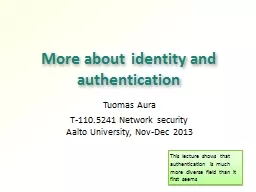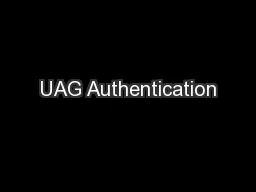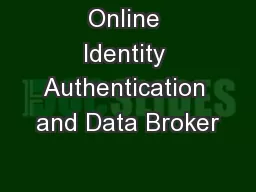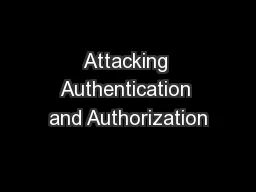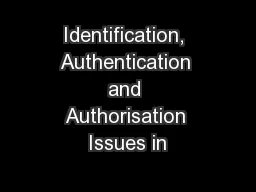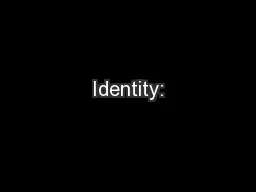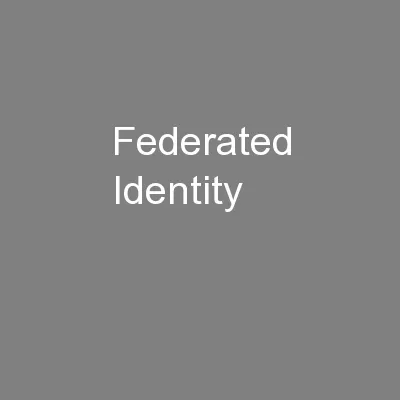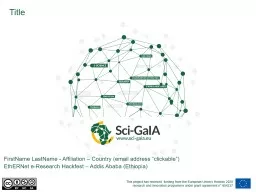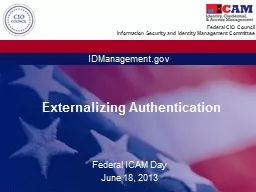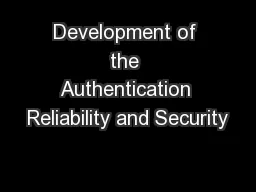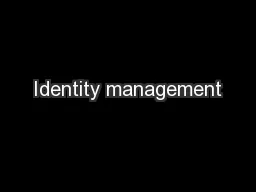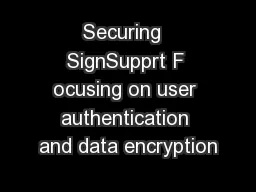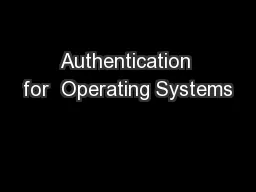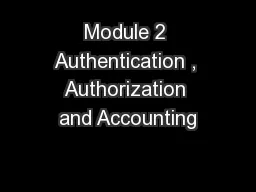PPT-More about identity and authentication
Author : aaron | Published Date : 2019-12-02
More about identity and authentication Tuomas Aura T1105241 Network security Aalto University NovDec 2013 This lecture shows that authentication is much more diverse
Presentation Embed Code
Download Presentation
Download Presentation The PPT/PDF document "More about identity and authentication" is the property of its rightful owner. Permission is granted to download and print the materials on this website for personal, non-commercial use only, and to display it on your personal computer provided you do not modify the materials and that you retain all copyright notices contained in the materials. By downloading content from our website, you accept the terms of this agreement.
More about identity and authentication: Transcript
Download Rules Of Document
"More about identity and authentication"The content belongs to its owner. You may download and print it for personal use, without modification, and keep all copyright notices. By downloading, you agree to these terms.
Related Documents

